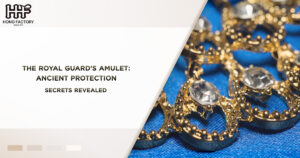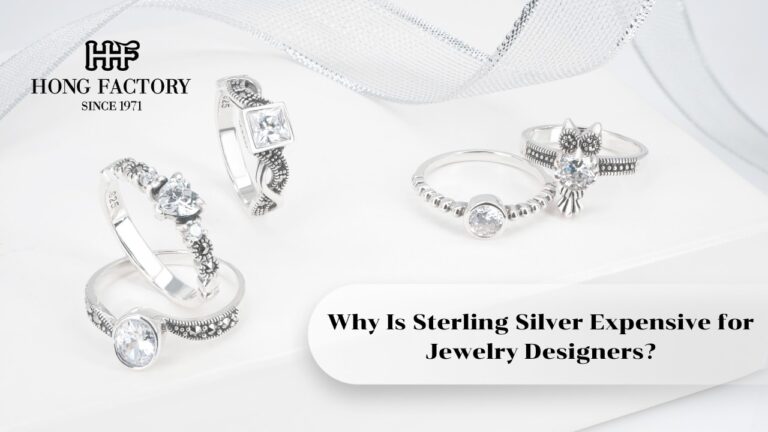
The allure of ancient Egypt has captivated the imaginations of people for centuries. From the grandeur of the pyramids to the cryptic hieroglyphs etched into stone, this ancient civilization left behind a legacy rich in art, mysticism, and symbolism. Among the many treasures of ancient Egypt, scarab jewelry stands out as one of the most iconic and enduring artifacts. Beyond its dazzling appearance, scarab jewelry holds a deep spiritual significance, symbolizing protection, renewal, and the mysteries of life and death. This article delves into the history, symbolism, and modern applications of scarab jewelry, exploring why these Egyptian amulets remain powerful protection symbols even today.
The History of Scarab Jewelry in Ancient Egypt
The scarab beetle, specifically the species known as Scarabaeus sacer (or the sacred dung beetle), was a potent symbol in ancient Egyptian culture. Its association with the gods, particularly the sun deity Khepri, elevated it to a revered status. Khepri, depicted as a man with a scarab beetle for a head, was believed to roll the sun across the sky each day, much like the scarab beetle rolls balls of dung. This act of rolling symbolized the eternal cycle of life, death, and rebirth.
Scarab amulets first appeared in Egypt during the Old Kingdom (circa 2686–2181 BCE) and became highly popular during the Middle Kingdom (circa 2055–1650 BCE) and New Kingdom (circa 1550–1070 BCE). These amulets served as more than decorative items; they were infused with spiritual and protective purposes. Scarab seals, for example, were used for administrative purposes, bearing inscriptions of names or prayers to invoke divine favor.
Their role, however, extended far beyond bureaucracy. Scarab jewelry was often placed in tombs as part of burial practices. The Egyptians believed these amulets could guide the deceased through the afterlife, ensuring their rebirth and protection symbols from malevolent forces. Heart scarabs—larger versions of the scarab amulet—were inscribed with texts from the Book of the Dead and placed over the heart of the deceased. These inscriptions acted as a magical safeguard during the final judgment, ensuring that the heart would not betray the soul during the weighing of deeds.
Symbolism of Scarab Jewelry – A Protection Symbol for Eternity

At the core of scarab jewelry lies a network of profound symbolic meanings that resonate with core values of ancient Egyptian amulets. The scarab beetle carried associations with protection, transformation, and cosmic harmony, making it an indispensable part of Egyptian amulets.
1. Protection Against Evil
Scarab jewelry was widely regarded as a powerful talisman against evil forces. Ancient Egyptians believed that these amulets created a spiritual barrier, warding off negative energies and safeguarding the wearer from harm. Whether worn as a necklace, bracelet, or ring, scarab jewelry was thought to imbue the wearer with divine protection.
2. Symbol of Renewal and Resurrection
The scarab beetle’s life cycle—emerging seemingly spontaneously from the earth—was seen as a metaphor for creation and rebirth. This connection to renewal made scarab amulets particularly important in funerary contexts. They represented the deceased’s journey through the afterlife and their eventual rebirth into eternity.
3. Connection to the Sun and Cosmic Order
As a symbol of Khepri, the scarab beetle was directly linked to the sun’s daily cycle. This connection to the sun imbued scarab jewelry with the power of cosmic order, light, and life. It served as a reminder of the universe’s balance and the cyclical nature of existence.
4. Personal Empowerment
Wearing scarab jewelry was not only a spiritual act but also a personal one. It was believed to grant the wearer strength, courage, and determination, mirroring the beetle’s tenacity and resilience.
Scarab Jewelry in Modern Times
Although thousands of years have passed since the height of ancient Egyptian civilization, the enduring charm of scarab jewelry continues to captivate people around the world. Modern designs inspired by the ancient Egyptian amulet have found their way into contemporary fashion, fine jewelry, and spiritual practices. Let’s explore how scarab jewelry is applied and appreciated in today’s world.
1. Aesthetic Appeal in Jewelry
The intricate craftsmanship and timeless elegance of scarab designs have made them a favorite among jewelry enthusiasts. Jewelers incorporate the symbol into necklaces, earrings, bracelets, and rings, often using precious materials like gold, silver, and gemstones. The vibrant colors of turquoise, lapis lazuli, and carnelian—stones commonly used in ancient Egyptian jewelry—enhance the visual appeal of modern scarab-inspired pieces.
2. Spiritual Significance
Many people today seek jewelry with meaning, and scarab jewelry resonates deeply with those drawn to its spiritual symbolism. It is often worn as a talisman for protection, personal empowerment, and renewal. In an age where mindfulness and self-care are emphasized, the scarab’s connection to cosmic balance and cycles of transformation holds profound relevance.
3. Cultural and Historical Appreciation
Scarab jewelry is also cherished for its cultural and historical significance. It allows wearers to connect with the mystique of ancient Egypt and honor its legacy. Museums and exhibitions dedicated to Egyptian art and artifacts often feature scarab jewelry, sparking interest in its cultural importance and inspiring modern adaptations.
4. Custom and Handcrafted Designs
Artisans and jewelers around the world create custom scarab jewelry, blending traditional Egyptian motifs with contemporary styles. This fusion of old and new ensures that the legacy of scarab amulets continues to evolve while staying true to its roots.
The Scarab’s Universal Appeal – Why It Endures
What makes scarab jewelry so universally appealing across time and cultures? The answer lies in its combination of beauty, symbolism, and adaptability. Whether as a token of good luck, a symbol of resilience, or a connection to ancient wisdom, the scarab speaks to universal human desires for protection, renewal, and a sense of purpose.
In addition, the scarab’s association with the sun—a source of life and energy—resonates across cultures. People today are drawn to symbols that remind them of nature’s cycles and their place within the larger cosmos. The scarab does just that, bridging ancient beliefs with modern values.
How to Incorporate Scarab Jewelry Into Your Life
If you’re considering adding scarab jewelry to your collection, here are a few ways to make the most of its beauty and meaning
- Wear it as a Talisman : Choose a piece of scarab jewelry, such as a pendant or bracelet, and wear it daily as a source of protection and empowerment.
- Gift it to Loved Ones : A scarab amulet makes for a thoughtful and meaningful gift, symbolizing your wish for the recipient’s safety and renewal.
- Use it in Meditation : Incorporate scarab jewelry into your spiritual practice as a focus object during meditation, connecting with its symbolism of rebirth and cosmic harmony.
- Display it as Art : Scarab jewelry can also be displayed as a decorative piece, bringing a touch of ancient Egyptian mystique to your home.
Conclusion
Scarab jewelry is far more than just an accessory; it is a bridge to the mystical world of ancient Egypt, a tangible connection to its rich spiritual heritage. As Egyptian amulets, scarabs encapsulate the essence of protection symbols, offering both beauty and profound meaning. Whether worn for its aesthetic charm or spiritual significance, scarab jewelry continues to captivate and inspire, proving that the secrets of ancient Egypt are as relevant today as they were thousands of years ago.
By embracing scarab jewelry, we honor the timeless wisdom of the past while finding strength and guidance for the present and future. Its legacy as a symbol of protection, renewal, and cosmic order serves as a reminder that some truths transcend the boundaries of time and culture, resonating with the human spirit across the ages.















